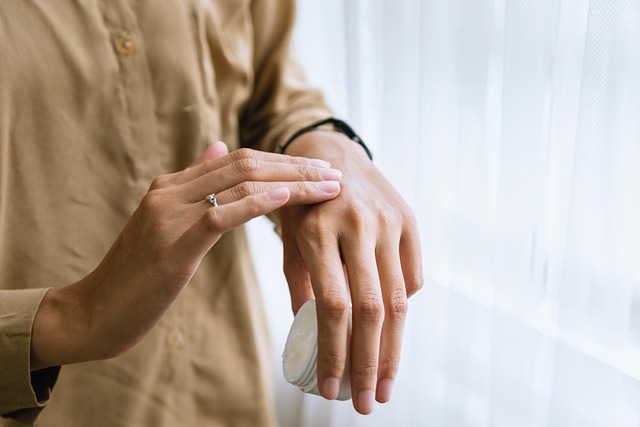Start With Knowing Your Skin
No product or hack will work if you’re treating the wrong skin type. Figuring that out is step one.
Here’s a quick breakdown:
Dry skin? Feels tight, flakes easily, drinks moisturizer fast.
Oily skin? Looks shiny, feels greasy, breaks out more.
Combination? Oily in the T zone (forehead, nose, chin), dry or normal elsewhere.
Sensitive? Reacts quickly to new products redness, burning, itching.
Normal skin? Balanced, not too dry or oily, minimal drama.
A simple test: Wash your face with a gentle cleanser and pat it dry. Wait an hour. If your skin feels dry or tight it’s probably dry. Shiny all over? Oily. A mix? Combo. Red or irritated? Sensitive. If it feels fine and looks even, it’s normal.
Why this matters: Slathering heavy creams on oily skin can make breakouts worse. Skipping moisturizer with dry skin just makes the flakes stack up. Your routine needs to be tailored, not trendy. One size fits all doesn’t exist in skincare.
Know your baseline. The rest builds from there.
For Oily Skin
Oily skin produces excess sebum, which can lead to clogged pores and breakouts if not cared for properly. The key is to manage oil without over drying or irritating the skin.
Choose the Right Cleanser
When selecting a cleanser:
Go for gentle, foaming formulas that remove excess oil without stripping the skin.
Ensure it’s non comedogenic, meaning it won’t clog pores.
Pro tip: Avoid cleansers that leave your skin feeling tight this may signal over cleansing, which triggers more oil production.
Keep It Light with Moisturizers
Yes, even oily skin needs moisture. The trick is choosing the right texture:
Use lightweight, gel based moisturizers.
Look for water based formulas that hydrate without adding shine.
Ingredients That Work
Target oily skin issues with these powerhouse ingredients:
Salicylic Acid helps unclog pores and gently exfoliates
Niacinamide regulates oil production and improves skin texture
Clay (like kaolin or bentonite) absorbs excess oil and reduces shine
What to Avoid
Keeping oily skin balanced means steering clear of habits and products that make it worse:
Over washing twice a day is enough; more can irritate the skin
Heavy creams or oil rich products these can clog pores and increase breakouts
Choosing the right core products and being consistent is essential in managing oily skin effectively.
For Dry Skin
If your skin feels tight, flakes easily, or looks dull, you’re dealing with dryness and stripping it further is the last thing you want. Cream based or oil cleansers are the way to go. They clean gently without removing essential oils. Save the harsh, foaming formulas for someone else’s medicine cabinet.
Locking in moisture is the next move. Go for rich moisturizers packed with ceramides or hyaluronic acid. Ceramides help restore the skin barrier, while hyaluronic acid draws in moisture like a magnet.
Once a week, throw in a hydration mask. Look for ingredients like squalane, honey, or glycerin. These masks act like a tall glass of water for your face. Also consider adding a barrier repair cream if you’re dealing with redness or increased sensitivity especially in colder months.
Avoid anything alcohol heavy, especially toners. And skip foaming cleansers altogether they’re usually too strong and leave skin more dehydrated than it started.
For Combination Skin

Combination skin doesn’t play by one set of rules so your routine needs to get a little tactical. The T zone (forehead, nose, chin) usually leans oily, while the cheeks might be dry or normal. That means one size fits all products often miss the mark.
Start by thinking in zones. Use a mattifying toner or lightweight gel on shinier areas, and a richer serum or cream where you’re more prone to dryness. Don’t be afraid to layer: a hydrating serum can go on first across your whole face, followed by a more targeted product on the oily parts. It’s all about balance.
Daytime routines should focus on oil control and protection lightweight moisturizer, SPF, and maybe a primer to keep the shine in check. At night, lean into nourishment. That’s your chance to boost hydration where it’s needed most and let the skin recover evenly.
Combination skin isn’t a problem it just asks you to pay attention. Once you find what works for each zone, it’s a puzzle that pretty much solves itself.
For Sensitive Skin
When your skin reacts to just about everything, less really is more. Start by cutting out any product with fragrance natural or synthetic. Even a botanical oil can trigger irritation. Stick to fragrance free, hypoallergenic picks labeled specifically for sensitive skin. These aren’t marketing buzzwords; they’re what keep your face from turning red or flaring up.
Before committing to anything new, patch test. Inside your wrist or behind your ear. Give it 24 hours. If there’s no reaction, it’s probably safe. It’s a small step that could save your skin days of discomfort.
When it comes to ingredients, cut through the clutter. Go for calming staples like aloe vera, chamomile, or oat extract. These are old school for a reason they work without drama. Avoid complicated, multi step routines. Sensitive skin doesn’t need ten layers, just a few that pull their weight.
The goal here isn’t perfection. It’s calm, balanced skin without the guessing game.
Nighttime Routine Essentials for All Skin Types
Your skin doesn’t sleep when you do. In fact, nighttime is when your skin works its hardest repairing, renewing, and making up for everything it faced during the day. Blood flow to the skin increases while you sleep, which kicks cell regeneration into higher gear. That also means skin is more receptive to whatever you put on it.
At night, your skin isn’t busy fighting off sun damage or pollution, so ingredients have a cleaner path to do their job. Serums, creams, and treatments tend to sink in deeper and work more effectively. It’s also the best time for heavier formulations that might feel too greasy during the day.
So don’t skip the nightly routine. Cleanse gently, apply targeted treatments, and seal them in with a solid moisturizer. That’s the difference between waking up dull or waking up glowing.
Check out these pro tips for an overnight skin glow to fine tune your routine further.
Building a Personal Routine That Lasts
Your skin doesn’t stay the same year round or year to year. Maybe winter dries you out, while summer brings on the shine. Maybe you’re noticing fine lines where you didn’t before. That’s not a problem it just means your skincare routine needs to adapt.
Start by paying attention. A simple skincare journal helps here. Track what you’re adding, what’s reacting well (or not), and how your skin feels through different seasons. This doesn’t have to be fancy a few notes on your phone will do.
More importantly, stay patient. Skin doesn’t change overnight, and no product delivers miracles in three days. Give it weeks. Let ingredients work. And if something isn’t doing it for you, don’t be afraid to adjust.
Skincare is not a set it and forget it deal it’s a conversation with your body. Revisit what you’re doing every few months. Swap routines with temperature shifts, humidity levels, or major lifestyle changes. Evolve with your skin, not in spite of it.
Bonus: Overnight Skin Boosters
If you want to wake up with better skin than you had the night before, it’s all about stacking the right treatments before bed. Night serums are the heavy lifters here look for formulas with retinol, peptides, or vitamin C if your skin can handle it. These ingredients work overtime during deep sleep, when your skin’s repair mode is in full swing.
Hydration focused masks are another win, especially for dry or weather beaten skin. Think overnight creams with squalane or ceramides. You don’t need a fancy routine just an extra layer that seals in moisture, not your pores.
One underrated tactic: swap out your regular pillowcase. Silk or satin options reduce friction, helping your skin retain moisture and minimizing fabric induced breakouts. A clean pillowcase also keeps residue and bacteria at bay.
If you’re serious about next level glow, timing and layering matter. Cleanse well, apply your actives, moisturize, and finish with that overnight booster. Then sleep on the good side of the pillow. For more tips that actually work, check out overnight skin glow tips.


